Phillip Howard
Transformer-Based Temporal Information Extraction and Application: A Review
Apr 10, 2025Abstract:Temporal information extraction (IE) aims to extract structured temporal information from unstructured text, thereby uncovering the implicit timelines within. This technique is applied across domains such as healthcare, newswire, and intelligence analysis, aiding models in these areas to perform temporal reasoning and enabling human users to grasp the temporal structure of text. Transformer-based pre-trained language models have produced revolutionary advancements in natural language processing, demonstrating exceptional performance across a multitude of tasks. Despite the achievements garnered by Transformer-based approaches in temporal IE, there is a lack of comprehensive reviews on these endeavors. In this paper, we aim to bridge this gap by systematically summarizing and analyzing the body of work on temporal IE using Transformers while highlighting potential future research directions.
Quantifying Interpretability in CLIP Models with Concept Consistency
Mar 14, 2025Abstract:CLIP is one of the most popular foundational models and is heavily used for many vision-language tasks. However, little is known about the inner workings of CLIP. While recent work has proposed decomposition-based interpretability methods for identifying textual descriptions of attention heads in CLIP, the implications of conceptual consistency in these text labels on interpretability and model performance has not been explored. To bridge this gap, we study the conceptual consistency of text descriptions for attention heads in CLIP-like models. We conduct extensive experiments on six different models from OpenAI and OpenCLIP which vary by size, type of pre-training data and patch size. We propose Concept Consistency Score (CCS), a novel interpretability metric that measures how consistently individual attention heads in CLIP models align with specific concepts. To assign concept labels to heads, we use in-context learning with ChatGPT, guided by a few manually-curated examples, and validate these labels using an LLM-as-a-judge approach. Our soft-pruning experiments reveal that high CCS heads are critical for preserving model performance, as pruning them leads to a significantly larger performance drop than pruning random or low CCS heads. Notably, we find that high CCS heads capture essential concepts and play a key role in out-of-domain detection, concept-specific reasoning, and video-language understanding. These results position CCS as a powerful interpretability metric for analyzing CLIP-like models.
LVLM-Compress-Bench: Benchmarking the Broader Impact of Large Vision-Language Model Compression
Mar 06, 2025Abstract:Despite recent efforts in understanding the compression impact on large language models (LLMs) in terms of their downstream task performance and trustworthiness on relatively simpler uni-modal benchmarks (for example, question answering, common sense reasoning), their detailed study on multi-modal Large Vision-Language Models (LVLMs) is yet to be unveiled. Towards mitigating this gap, we present LVLM-Compress-Bench, a framework to first thoroughly study the broad impact of compression on the generative performance of LVLMs with multi-modal input driven tasks. In specific, we consider two major classes of compression for autoregressive models, namely KV cache and weight compression, for the dynamically growing intermediate cache and static weights, respectively. We use four LVLM variants of the popular LLaVA framework to present our analysis via integrating various state-of-the-art KV and weight compression methods including uniform, outlier-reduced, and group quantization for the KV cache and weights. With this framework we demonstrate on ten different multi-modal datasets with different capabilities including recognition, knowledge, language generation, spatial awareness, visual reasoning, hallucination and visual illusion identification, toxicity, stereotypes and bias. In specific, our framework demonstrates the compression impact on both general and ethically critical metrics leveraging a combination of real world and synthetic datasets to encompass diverse societal intersectional attributes. Extensive experimental evaluations yield diverse and intriguing observations on the behavior of LVLMs at different quantization budget of KV and weights, in both maintaining and losing performance as compared to the baseline model with FP16 data format. Code will be open-sourced at https://github.com/opengear-project/LVLM-compress-bench.
Is Your Paper Being Reviewed by an LLM? A New Benchmark Dataset and Approach for Detecting AI Text in Peer Review
Feb 26, 2025Abstract:Peer review is a critical process for ensuring the integrity of published scientific research. Confidence in this process is predicated on the assumption that experts in the relevant domain give careful consideration to the merits of manuscripts which are submitted for publication. With the recent rapid advancements in large language models (LLMs), a new risk to the peer review process is that negligent reviewers will rely on LLMs to perform the often time consuming process of reviewing a paper. However, there is a lack of existing resources for benchmarking the detectability of AI text in the domain of peer review. To address this deficiency, we introduce a comprehensive dataset containing a total of 788,984 AI-written peer reviews paired with corresponding human reviews, covering 8 years of papers submitted to each of two leading AI research conferences (ICLR and NeurIPS). We use this new resource to evaluate the ability of 18 existing AI text detection algorithms to distinguish between peer reviews written by humans and different state-of-the-art LLMs. Motivated by the shortcomings of existing methods, we propose a new detection approach which surpasses existing methods in the identification of AI written peer reviews. Our work reveals the difficulty of identifying AI-generated text at the individual peer review level, highlighting the urgent need for new tools and methods to detect this unethical use of generative AI.
Training-Free Mitigation of Language Reasoning Degradation After Multimodal Instruction Tuning
Dec 04, 2024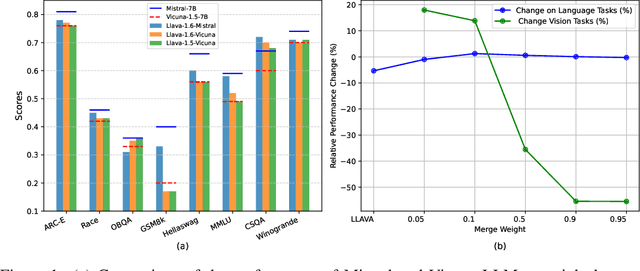
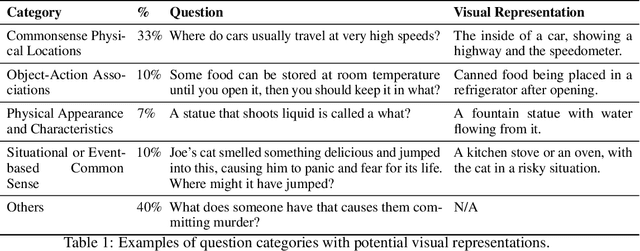
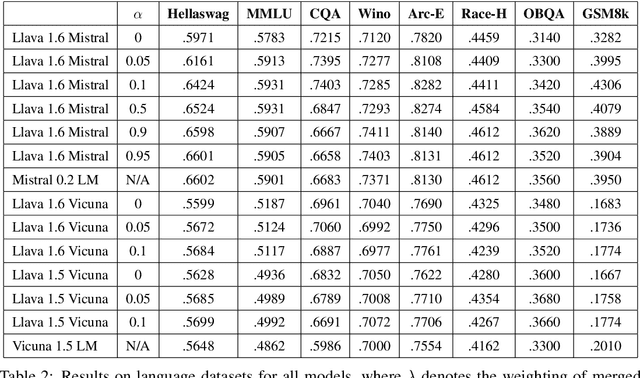
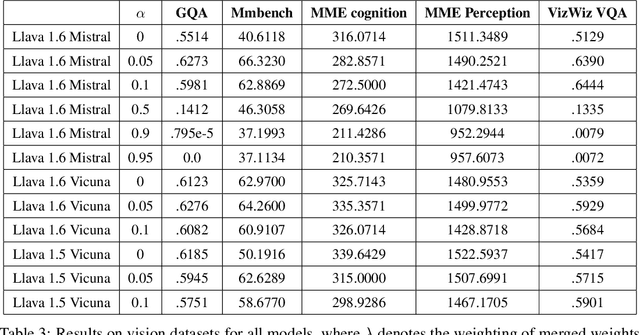
Abstract:Multimodal models typically combine a powerful large language model (LLM) with a vision encoder and are then trained on multimodal data via instruction tuning. While this process adapts LLMs to multimodal settings, it remains unclear whether this adaptation compromises their original language reasoning capabilities. In this work, we explore the effects of multimodal instruction tuning on language reasoning performance. We focus on LLaVA, a leading multimodal framework that integrates LLMs such as Vicuna or Mistral with the CLIP vision encoder. We compare the performance of the original LLMs with their multimodal-adapted counterparts across eight language reasoning tasks. Our experiments yield several key insights. First, the impact of multimodal learning varies between Vicuna and Mistral: we observe a degradation in language reasoning for Mistral but improvements for Vicuna across most tasks. Second, while multimodal instruction learning consistently degrades performance on mathematical reasoning tasks (e.g., GSM8K), it enhances performance on commonsense reasoning tasks (e.g., CommonsenseQA). Finally, we demonstrate that a training-free model merging technique can effectively mitigate the language reasoning degradation observed in multimodal-adapted Mistral and even improve performance on visual tasks.
Debias your Large Multi-Modal Model at Test-Time with Non-Contrastive Visual Attribute Steering
Nov 15, 2024
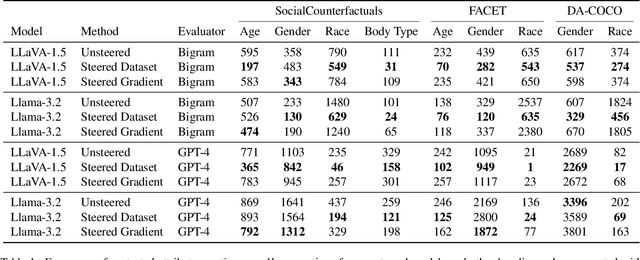
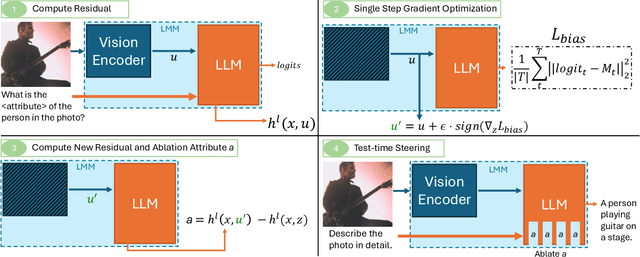
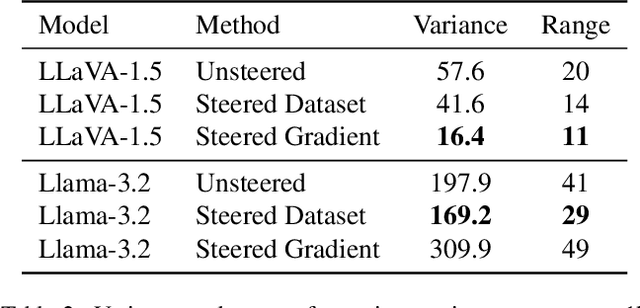
Abstract:Large Multi-Modal Models (LMMs) have demonstrated impressive capabilities as general-purpose chatbots that can engage in conversations about a provided input, such as an image. However, their responses are influenced by societal biases present in their training datasets, leading to undesirable differences in how the model responds when presented with images depicting people of different demographics. In this work, we propose a novel debiasing framework for LMMs that directly removes biased representations during text generation to decrease outputs related to protected attributes, or even representing them internally. Our proposed method is training-free; given a single image and a list of target attributes, we can ablate the corresponding representations with just one step of gradient descent on the image itself. Our experiments show that not only can we can minimize the propensity of LMMs to generate text related to protected attributes, but we can improve sentiment and even simply use synthetic data to inform the ablation while retaining language modeling capabilities on real data such as COCO or FACET. Furthermore, we find the resulting generations from a debiased LMM exhibit similar accuracy as a baseline biased model, showing that debiasing effects can be achieved without sacrificing model performance.
Distill-SynthKG: Distilling Knowledge Graph Synthesis Workflow for Improved Coverage and Efficiency
Oct 22, 2024



Abstract:Knowledge graphs (KGs) generated by large language models (LLMs) are becoming increasingly valuable for Retrieval-Augmented Generation (RAG) applications that require knowledge-intensive reasoning. However, existing KG extraction methods predominantly rely on prompt-based approaches, which are inefficient for processing large-scale corpora. These approaches often suffer from information loss, particularly with long documents, due to the lack of specialized design for KG construction. Additionally, there is a gap in evaluation datasets and methodologies for ontology-free KG construction. To overcome these limitations, we propose SynthKG, a multi-step, document-level ontology-free KG synthesis workflow based on LLMs. By fine-tuning a smaller LLM on the synthesized document-KG pairs, we streamline the multi-step process into a single-step KG generation approach called Distill-SynthKG, substantially reducing the number of LLM inference calls. Furthermore, we re-purpose existing question-answering datasets to establish KG evaluation datasets and introduce new evaluation metrics. Using KGs produced by Distill-SynthKG, we also design a novel graph-based retrieval framework for RAG. Experimental results demonstrate that Distill-SynthKG not only surpasses all baseline models in KG quality -- including models up to eight times larger -- but also consistently excels in retrieval and question-answering tasks. Our proposed graph retrieval framework also outperforms all KG-retrieval methods across multiple benchmark datasets. We release the SynthKG dataset and Distill-SynthKG model publicly to support further research and development.
Debiasing Large Vision-Language Models by Ablating Protected Attribute Representations
Oct 17, 2024



Abstract:Large Vision Language Models (LVLMs) such as LLaVA have demonstrated impressive capabilities as general-purpose chatbots that can engage in conversations about a provided input image. However, their responses are influenced by societal biases present in their training datasets, leading to undesirable differences in how the model responds when presented with images depicting people of different demographics. In this work, we propose a novel debiasing framework for LVLMs by directly ablating biased attributes during text generation to avoid generating text related to protected attributes, or even representing them internally. Our method requires no training and a relatively small amount of representative biased outputs (~1000 samples). Our experiments show that not only can we can minimize the propensity of LVLMs to generate text related to protected attributes, but we can even use synthetic data to inform the ablation while retaining captioning performance on real data such as COCO. Furthermore, we find the resulting generations from a debiased LVLM exhibit similar accuracy as a baseline biased model, showing that debiasing effects can be achieved without sacrificing model performance.
Is Your Paper Being Reviewed by an LLM? Investigating AI Text Detectability in Peer Review
Oct 03, 2024Abstract:Peer review is a critical process for ensuring the integrity of published scientific research. Confidence in this process is predicated on the assumption that experts in the relevant domain give careful consideration to the merits of manuscripts which are submitted for publication. With the recent rapid advancements in the linguistic capabilities of large language models (LLMs), a new potential risk to the peer review process is that negligent reviewers will rely on LLMs to perform the often time consuming process of reviewing a paper. In this study, we investigate the ability of existing AI text detection algorithms to distinguish between peer reviews written by humans and different state-of-the-art LLMs. Our analysis shows that existing approaches fail to identify many GPT-4o written reviews without also producing a high number of false positive classifications. To address this deficiency, we propose a new detection approach which surpasses existing methods in the identification of GPT-4o written peer reviews at low levels of false positive classifications. Our work reveals the difficulty of accurately identifying AI-generated text at the individual review level, highlighting the urgent need for new tools and methods to detect this type of unethical application of generative AI.
Quantifying and Enabling the Interpretability of CLIP-like Models
Sep 10, 2024Abstract:CLIP is one of the most popular foundational models and is heavily used for many vision-language tasks. However, little is known about the inner workings of CLIP. To bridge this gap we propose a study to quantify the interpretability in CLIP like models. We conduct this study on six different CLIP models from OpenAI and OpenCLIP which vary by size, type of pre-training data and patch size. Our approach begins with using the TEXTSPAN algorithm and in-context learning to break down individual attention heads into specific properties. We then evaluate how easily these heads can be interpreted using new metrics which measure property consistency within heads and property disentanglement across heads. Our findings reveal that larger CLIP models are generally more interpretable than their smaller counterparts. To further assist users in understanding the inner workings of CLIP models, we introduce CLIP-InterpreT, a tool designed for interpretability analysis. CLIP-InterpreT offers five types of analyses: property-based nearest neighbor search, per-head topic segmentation, contrastive segmentation, per-head nearest neighbors of an image, and per-head nearest neighbors of text.
 Add to Chrome
Add to Chrome Add to Firefox
Add to Firefox Add to Edge
Add to Edge